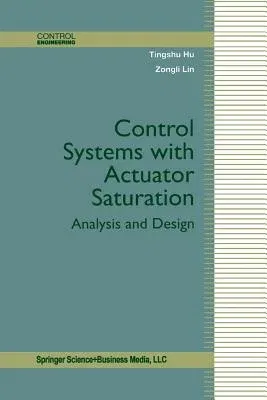Tingshu Hu
(Author)Control Systems with Actuator Saturation: Analysis and Design (Softcover Reprint of the Original 1st 2001)Paperback - Softcover Reprint of the Original 1st 2001, 24 October 2012

Qty
1
Turbo
Ships in 2 - 3 days
In Stock
Free Delivery
Cash on Delivery
15 Days
Free Returns
Secure Checkout
Part of Series
Control Engineering
Print Length
392 pages
Language
English
Publisher
Birkhauser
Date Published
24 Oct 2012
ISBN-10
1461266610
ISBN-13
9781461266617
Description
Product Details
Authors:
Book Edition:
Softcover Reprint of the Original 1st 2001
Book Format:
Paperback
Country of Origin:
NL
Date Published:
24 October 2012
Dimensions:
23.39 x
15.6 x
2.13 cm
ISBN-10:
1461266610
ISBN-13:
9781461266617
Language:
English
Location:
Boston, MA
Pages:
392
Publisher:
Series:
Weight:
576.06 gm

